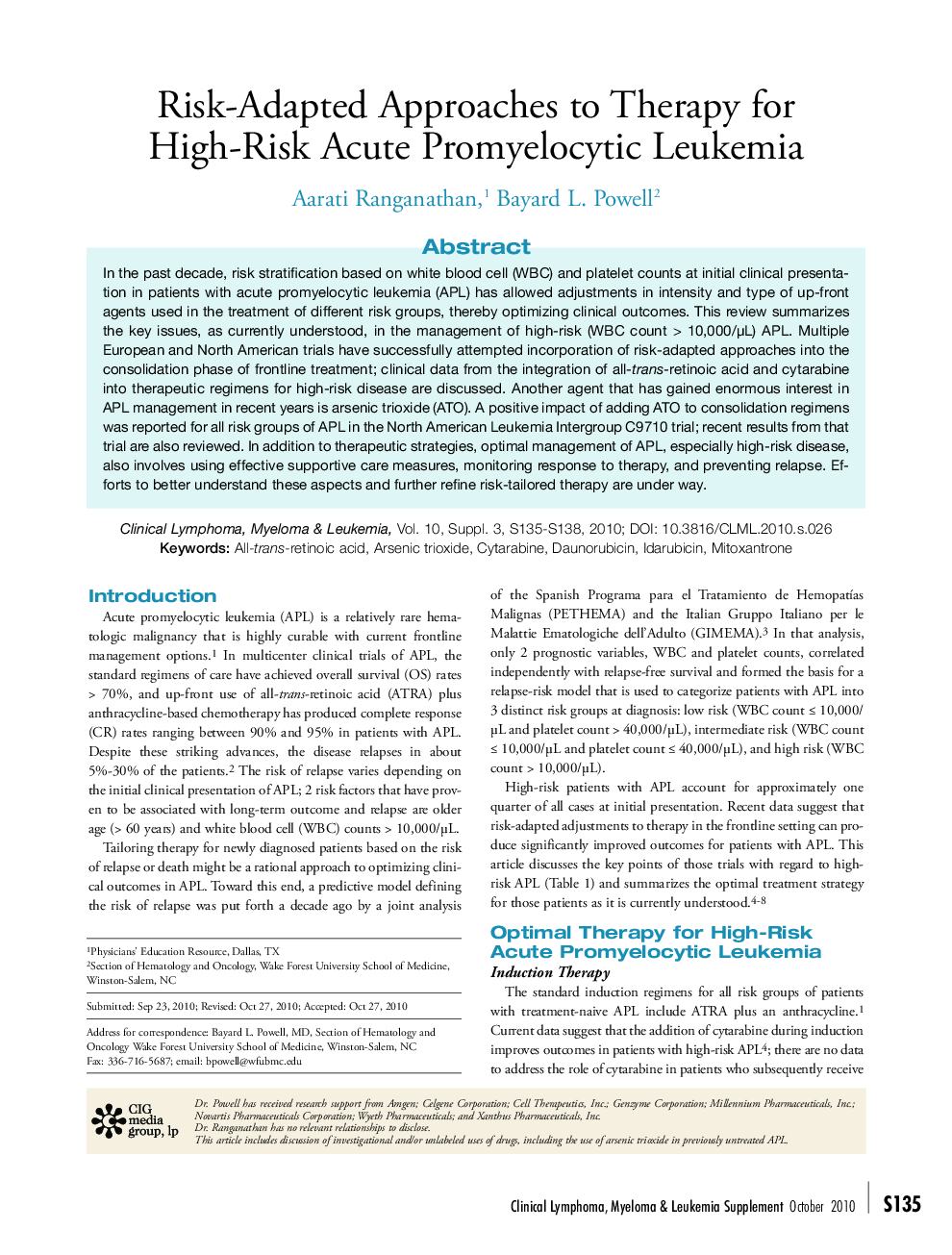| Article ID | Journal | Published Year | Pages | File Type |
|---|---|---|---|---|
| 2755534 | Clinical Lymphoma Myeloma and Leukemia | 2010 | 4 Pages |
In the past decade, risk stratification based on white blood cell (WBC) and platelet counts at initial clinical presentation in patients with acute promyelocytic leukemia (APL) has allowed adjustments in intensity and type of up-front agents used in the treatment of different risk groups, thereby optimizing clinical outcomes. This review summarizes the key issues, as currently understood, in the management of high-risk (WBC count > 10,000/μL) APL. Multiple European and North American trials have successfully attempted incorporation of risk-adapted approaches into the consolidation phase of frontline treatment; clinical data from the integration of all-trans-retinoic acid and cytarabine into therapeutic regimens for high-risk disease are discussed. Another agent that has gained enormous interest in APL management in recent years is arsenic trioxide (ATO). A positive impact of adding ATO to consolidation regimens was reported for all risk groups of APL in the North American Leukemia Intergroup C9710 trial; recent results from that trial are also reviewed. In addition to therapeutic strategies, optimal management of APL, especially high-risk disease, also involves using effective supportive care measures, monitoring response to therapy, and preventing relapse. Efforts to better understand these aspects and further refine risk-tailored therapy are under way.
